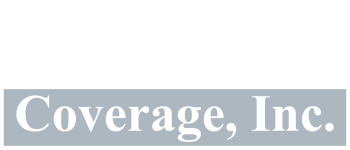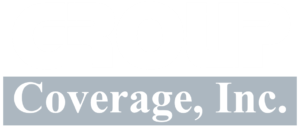Pension Plans - Profit Sharing Plans
Plans intended to enhance an employee’s welfare are pensions and savings accounts. These products are used to fund an employee’s retirement or boost their savings. There are several types of retirement and savings accounts such as 401k’s, 403b’s, ESOP’s, stock options, tax deferred annuities, Keogh’s, SEP’s, defined benefit plans, Simple IRA’s, etc. Many of these plans are considered ‘qualified’ by the IRS as the contributions are on a pre-tax basis and the earnings within the plan can grow tax deferred. Thus, it is commonly suggested to seek the counsel of an accountant to discuss which type of program would offer the best situation to the company and the group members before implementing any one of these plans.
These plans can be wholly funded by the employer or more frequently offer an employer an opportunity to match the contributions of the employee. The concept of matching affords the employer a vesting period. This creates a lock-in time frame whereby an employee wouldn’t be entitled to the complete contributions of their employer until they satisfy a certain pre-established waiting period. This is often regarded as the “golden handcuffs” to the employer as they can hold the employee captive until the vesting period has expired.
Below are some important links to the IRS web site for understanding pension products and the tax treatment of them:

Pension Plans - Profit Sharing Plans

Plans intended to enhance an employee’s welfare are pensions and savings accounts. These products are used to fund an employee’s retirement or boost their savings. There are several types of retirement and savings accounts such as 401k’s, 403b’s, ESOP’s, stock options, tax deferred annuities, Keogh’s, SEP’s, defined benefit plans, Simple IRA’s, etc. Many of these plans are considered ‘qualified’ by the IRS as the contributions are on a pre-tax basis and the earnings within the plan can grow tax deferred. Thus, it is commonly suggested to seek the counsel of an accountant to discuss which type of program would offer the best situation to the company and the group members before implementing any one of these plans.
These plans can be wholly funded by the employer or more frequently offer an employer an opportunity to match the contributions of the employee. The concept of matching affords the employer a vesting period. This creates a lock-in time frame whereby an employee wouldn’t be entitled to the complete contributions of their employer until they satisfy a certain pre-established waiting period. This is often regarded as the “golden handcuffs” to the employer as they can hold the employee captive until the vesting period has expired.
Below are some important links to the IRS web site for understanding pension products and the tax treatment of them:
Payroll Deduction IRA
Under a Payroll Deduction IRA, employees establish an IRA.
(Either a Traditional or Roth IRA) with a financial institution
and authorize a payroll deduction amount for it. A business of
any size, even self-employed, can establish a Payroll Deduction
IRA program. (Source: IRS.gov)
SARSEP
- Was established before 1997.
- Permits employee salary reduction contributions.
- Meets the following participation requirements annually based on all eligible employees (even those hired after 1996):
- At least 50% of eligible employees must choose to make employee salary reduction contributions for the year.
- Had no more than 25 employees who were eligible to participate at any time during the preceding year.
- May need to be amended for current law changes (Source: IRS.gov)
SEP

RC 401(k) Plans
- Elective salary deferrals are excluded from the employee’s taxable income (except for designated Roth deferrals).
- Employers can contribute to employees’ accounts.
- Distributions, including earnings, are includible in taxable income at retirement (except for qualified distributions of designated Roth accounts). (Source: IRS.gov)
RC 401(k) Plans

- Elective salary deferrals are excluded from the employee’s taxable income (except for designated Roth deferrals).
- Employers can contribute to employees’ accounts.
- Distributions, including earnings, are includible in taxable income at retirement (except for qualified distributions of designated Roth accounts). (Source: IRS.gov)
Simple IRA
IRC 403(b) Tax-Sheltered Annuity Plans
A 403(b) tax-sheltered annuity (TSA) plan is a retirement plan, similar to a 401(k) plan, offered by public schools and certain 501(c)(3) tax-exempt organizations. An individual may only obtain a 403(b) annuity under an employer’s TSA plan. (Source: IRS.gov)
IRC 457(b) Deferred Compensation Plans
Governmental Plans
- the United States or its agency or instrumentality.
- a state or political subdivision, or its agency or instrumentality; or
- an Indian tribal government or its subdivision, or its agency or instrumentality (participants must substantially perform services essential to governmental functions rather than commercial activities.)

Governmental Plans

- the United States or its agency or instrumentality.
- a state or political subdivision, or its agency or instrumentality; or
- an Indian tribal government or its subdivision, or its agency or instrumentality (participants must substantially perform services essential to governmental functions rather than commercial activities.)
Other types of governmental plans include:
- 403(b) tax-sheltered annuity plans.
- 457 deferred compensation plans.
- qualified excess benefit arrangements; and
- Certain grandfathered 401(k) plans adopted by a governmental entity before May 6, 1986. (Source: IRS.gov)

